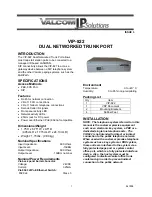
445
172.17.1.0/24 100 Type2 1 192.168.1.2 192.168.2.2
172.17.2.0/24 1 Type2 20 192.168.1.2 192.168.2.2
172.17.3.0/24 1 Type2 1 192.168.1.2 192.168.2.2
Total Nets: 4
Intra Area: 1 Inter Area: 0 ASE: 3 NSSA: 0
The output shows that the cost of route 172.17.1.0/24 is 100 and the tag of route
172.17.2.0/24 is 20.
Applying a routing policy to IPv6 route redistribution
Network requirements
As shown in
Figure 101
:
•
Run RIPng on Router A and Router B.
•
Configure three static routes on Router A.
•
On Router A, apply a routing policy to redistribute static routes 20::/32 and 40::/32 and deny
route 30::/32.
Figure 101
Network diagram
Configuration procedure
1.
Configure Router A:
# Configure IPv6 addresses for interfaces GigabitEthernet 1/0 and GigabitEthernet 2/0.
<RouterA> system-view
[RouterA] interface gigabitethernet 1/0
[RouterA-GigabitEthernet1/0] ipv6 address 10::1 32
[RouterA-GigabitEthernet1/0] quit
[RouterA] interface gigabitethernet 2/0
[RouterA-GigabitEthernet2/0] ipv6 address 11::1 32
[RouterA-GigabitEthernet2/0] quit
# Enable RIPng on GigabitEthernet 1/0.
[RouterA] interface gigabitethernet 1/0
[RouterA-GigabitEthernet1/0] ripng 1 enable
[RouterA-GigabitEthernet1/0] quit
# Configure three static routes with next hop 11::2, and make sure the static routes are active.
[RouterA] ipv6 route-static 20:: 32 11::2
[RouterA] ipv6 route-static 30:: 32 11::2
[RouterA] ipv6 route-static 40:: 32 11::2
# Configure a routing policy.
[RouterA] ipv6 prefix-list a index 10 permit 30:: 32







































